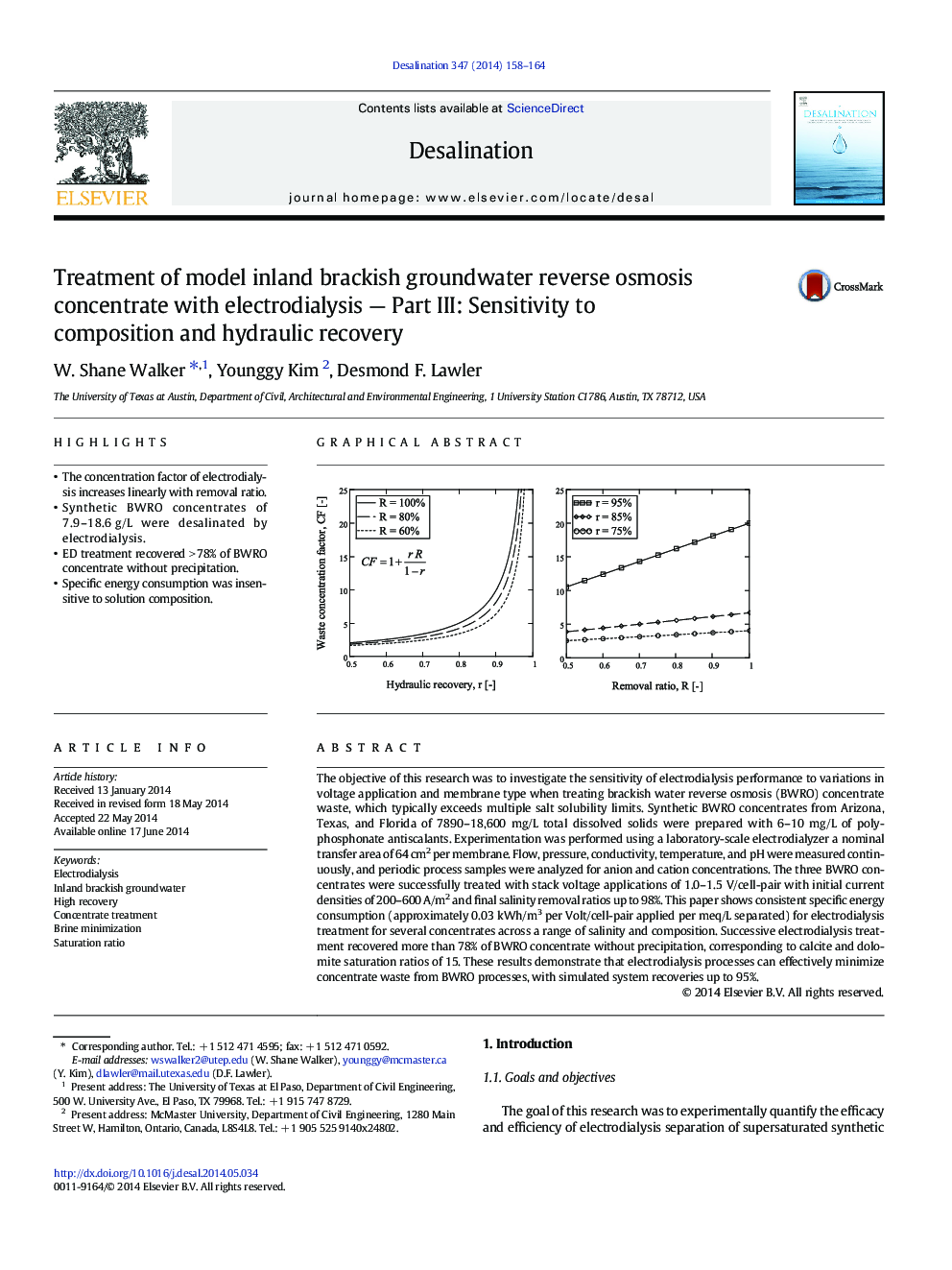| Article ID | Journal | Published Year | Pages | File Type |
|---|---|---|---|---|
| 623461 | Desalination | 2014 | 7 Pages |
•The concentration factor of electrodialysis increases linearly with removal ratio.•Synthetic BWRO concentrates of 7.9–18.6 g/L were desalinated by electrodialysis.•ED treatment recovered > 78% of BWRO concentrate without precipitation.•Specific energy consumption was insensitive to solution composition.
The objective of this research was to investigate the sensitivity of electrodialysis performance to variations in voltage application and membrane type when treating brackish water reverse osmosis (BWRO) concentrate waste, which typically exceeds multiple salt solubility limits. Synthetic BWRO concentrates from Arizona, Texas, and Florida of 7890–18,600 mg/L total dissolved solids were prepared with 6–10 mg/L of poly-phosphonate antiscalants. Experimentation was performed using a laboratory-scale electrodialyzer a nominal transfer area of 64 cm2 per membrane. Flow, pressure, conductivity, temperature, and pH were measured continuously, and periodic process samples were analyzed for anion and cation concentrations. The three BWRO concentrates were successfully treated with stack voltage applications of 1.0–1.5 V/cell-pair with initial current densities of 200–600 A/m2 and final salinity removal ratios up to 98%. This paper shows consistent specific energy consumption (approximately 0.03 kWh/m3 per Volt/cell-pair applied per meq/L separated) for electrodialysis treatment for several concentrates across a range of salinity and composition. Successive electrodialysis treatment recovered more than 78% of BWRO concentrate without precipitation, corresponding to calcite and dolomite saturation ratios of 15. These results demonstrate that electrodialysis processes can effectively minimize concentrate waste from BWRO processes, with simulated system recoveries up to 95%.
Graphical abstractFigure optionsDownload full-size imageDownload as PowerPoint slide
